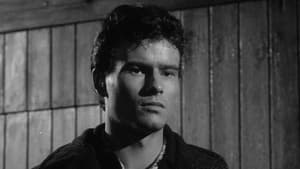Contact: [email protected]
Video Sources 0 Views

Synopsis
Tiger Bay 1959 Review: A Colorful Journey Through Crime and Drama

Introduction
In the realm of classic cinema, certain films stand as pillars of innovation and storytelling prowess. Among these gems is Tiger Bay (1959), a British crime drama directed by J. Lee Thompson. Renowned for its gripping narrative and standout performances, Tiger Bay has recently undergone a transformation, reimagined in an early colored version. In this article, we delve into the significance of this colorized rendition, exploring its impact on the timeless tale and its place in the annals of film history.
Check The Full Colorized Movies List
Check Our Colorized Movies Trailer Channel
Understanding Tiger Bay 1959: Director, Cast, and Genre
Directed by J. Lee Thompson, Tiger Bay (1959) epitomizes the British crime drama genre of the mid-20th century. Thompson’s directorial vision brings to life a gritty narrative set against the backdrop of Cardiff’s bustling port. The film stars Hollywood legend John Mills and newcomer Hayley Mills, whose dynamic performances anchor the story with emotional depth and authenticity. Tiger Bay explores themes of morality, loyalty, and the consequences of youthful naivety, making it a standout entry in the crime drama canon.
Exploring the World of Tiger Bay 1959: Plot and Characters
Set in the vibrant streets of Cardiff, Tiger Bay follows the unlikely bond that forms between a young girl named Gillie (Hayley Mills) and a Polish sailor named Korchinsky (Horst Buchholz). When Gillie inadvertently witnesses Korchinsky commit a murder, she becomes embroiled in a dangerous game of cat and mouse with the authorities. As the police close in on Korchinsky, Gillie must confront the moral complexities of loyalty and betrayal in a world fraught with danger and deceit. The film’s richly drawn characters and suspenseful plot twists keep audiences on the edge of their seats until the final frame.
The Art of Film Colorization
Film colorization, a process that adds color to black and white footage, has undergone significant advancements since its inception. Originally employed to breathe new life into classic films for contemporary audiences, colorization has evolved into an art form in its own right, offering filmmakers new avenues for creative expression. By carefully selecting color palettes and enhancing visual details, colorization can transform a film’s aesthetic while preserving its original essence.
Early Colored Films: A Brief History
The history of colored films traces back to the early experiments of filmmakers seeking to enhance the visual appeal of their works. Techniques such as hand-painting individual frames or tinting entire scenes were among the earliest methods employed to introduce color to the silver screen. However, it was not until the advent of Technicolor and other advanced colorization processes that colored films became widespread.
Tiger Bay 1959 and Its Early Colored Version
The decision to release Tiger Bay (1959) in a colorized format marks a departure from its original presentation in black and white. While purists may argue against tampering with the film’s aesthetic integrity, the colorized version offers a fresh perspective on Thompson’s vision. The vibrant hues breathe new life into the streets of Cardiff, enhancing the film’s atmosphere and immersing viewers in its world like never before. Moreover, the colorization process allows audiences to experience Tiger Bay in a way that feels more contemporary and accessible, bridging the gap between past and present.
The Debate Over Film Colorization
The practice of colorizing black and white films has long been a subject of debate within the film community. While proponents argue that colorization introduces modern audiences to classic works they might otherwise overlook, opponents contend that it undermines the artistic intentions of the original filmmakers. The controversy surrounding film colorization persists to this day, with passionate arguments on both sides of the aisle.
Examining Tiger Bay 1959 as an Early Colored Film
Viewing Tiger Bay (1959) in its early colored iteration offers an intriguing lens through which to analyze the film’s themes and motifs. The addition of color enriches the visual palette of Thompson’s narrative, highlighting the contrasts between the gritty port and the innocence of youth. Moreover, colorization enhances the emotional impact of key scenes, drawing audiences deeper into the story’s emotional core. However, some may argue that the film’s monochromatic aesthetic is integral to its artistic identity, raising questions about the necessity of colorization in enhancing the viewing experience.
Influence and Legacy: Tiger Bay 1959’s Impact on Cinema
Tiger Bay (1959) has left an indelible mark on the cinematic landscape, inspiring countless filmmakers and spawning a wave of imitators. Its exploration of complex characters and moral ambiguity paved the way for future works in the crime drama genre. Moreover, the film’s influence extended beyond British cinema, inspiring filmmakers around the world to explore similar themes of justice, loyalty, and redemption. The enduring legacy of Tiger Bay serves as a testament to its timeless appeal and universal resonance.
Director’s Cinematic Legacy: Beyond Tiger Bay 1959
J. Lee Thompson’s contributions to cinema extend far beyond Tiger Bay (1959), encompassing a diverse body of work that spans multiple genres and styles. His keen eye for character-driven storytelling and atmospheric cinematography has earned him a place among the most respected directors of the mid-20th century. Thompson’s legacy endures as a testament to his ability to craft compelling narratives that resonate with audiences across generations.
Themes Explored in Tiger Bay 1959
Tiger Bay (1959) delves into a myriad of themes, ranging from the nature of innocence to the consequences of betrayal. The film’s exploration of moral ambiguity and the complexities of human relationships speaks to universal truths that transcend time and place. Through its gripping storyline and nuanced character development, Tiger Bay invites viewers to reflect on the choices that define our lives and the bonds that connect us to one another.
Reception and Controversy Surrounding Tiger Bay 1959
Upon its release, Tiger Bay (1959) received widespread critical acclaim, with praise directed towards its atmospheric cinematography and standout performances. However, the decision to release the film in a colorized format sparked controversy among purists, who viewed the alteration as sacrilegious. Despite the backlash, the colorized version found an audience eager to experience Tiger Bay in a new light, underscoring the enduring appeal of Thompson’s masterpiece.
Where to Watch Tiger Bay 1959 Online
For those eager to experience Tiger Bay (1959) firsthand, the film is readily available on popular streaming platforms such as Netflix, Amazon Prime, and Criterion Channel. Whether in its original black and white format or the newly colorized version, Tiger Bay remains essential viewing for cinephiles seeking to explore the rich tapestry of British cinema.
FAQs About Tiger Bay 1959
- Why was Tiger Bay (1959) chosen for colorization?
- The decision to colorize Tiger Bay was driven by a desire to introduce the film to a new generation of viewers and breathe new life into its timeless narrative.
- Does the colorized version alter the film’s artistic integrity?
- While some purists may argue that colorization compromises the film’s aesthetic purity, others contend that it offers a fresh perspective on Thompson’s vision.
- How does the colorization affect the viewing experience?
- The addition of color enhances the film’s visual appeal, immersing viewers in its world and heightening the impact of key scenes and moments.
Conclusion
In conclusion, Tiger Bay (1959) stands as a testament to the enduring power of cinema to captivate and inspire audiences across generations. Whether viewed in its original black and white format or the newly colorized version, Thompson’s masterpiece continues to resonate with viewers, offering a poignant exploration of human nature and the complexities of the human experience. As we reflect on the film’s legacy and the ongoing debate surrounding film colorization, one thing remains clear: Tiger Bay remains essential viewing for anyone passionate about the art of cinema.















